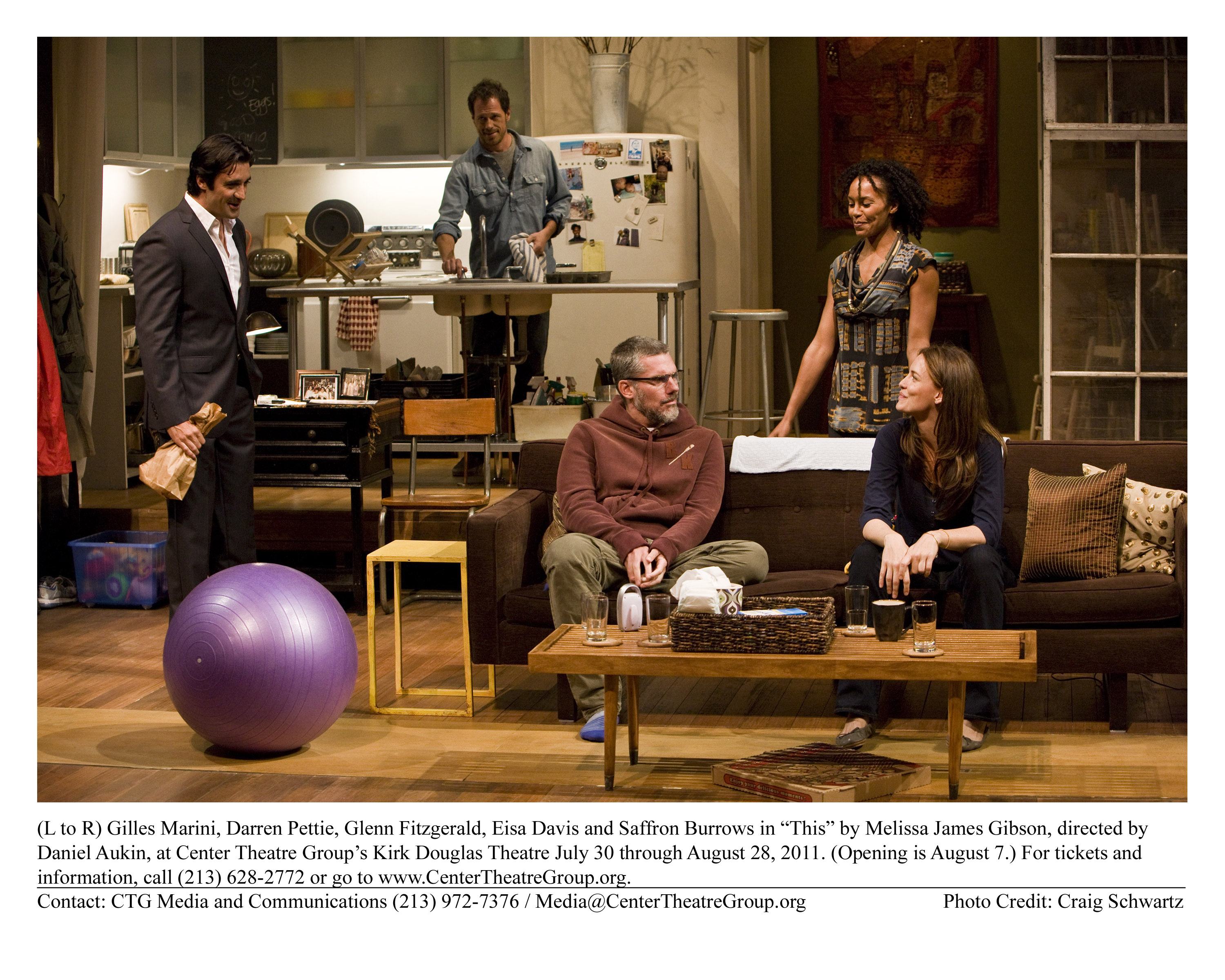“This”
Kirk Douglas Theatre
Through Sunday
2 paws
“This” ““ a simple title for a simple play.
And, though the play is simple, its storyline is interesting – five 40-something-year-old friends facing life’s struggles of death, marriage and a newborn baby – but “This” unfortunately fails to cash in on its potential.
“This” follows Jane (Saffron Burrows), who lost her husband to cancer the previous year; Jane’s best friend Marrell (Eisa Davis), a jazz singer unhappily married to Tom (Darren Pettie); Jane and Marrell’s gay friend Alan (Glenn Fitzgerald) and Frenchman Jean-Pierre (Gilles Marini).
The play begins in Marrell and Tom’s loft. A cluttered house represents the eroding relationship between Marrell and Tom, and the audience is able to see that the set was meticulously created.
It is clear from the beginning of the play that the actors are incredibly comfortable with each other as they banter back and forth. It really is like watching old friends on stage. The audience can also see that Marrell and Tom are having marital issues. While it seems trivial, Marrell nags Tom about a piece of wood that leans on their wall. With a passive aggressive voice, she comments to the group that Tom always brings these pieces home in an attempt to create art pieces, but fails to do anything productive. Tension fills the air.
The following scene only helps to build the unhappy storyline involving Tom and Marrell. The living room becomes dim, and a door is brought on stage to represent Jane’s house. Throughout the production, the set transitions are done with ease. With only a single light to highlight a door, the stage is able to shift to represent Jane’s house seamlessly.
Tom comes on-stage to go to Jane’s house and confesses that she has “invaded his mind.” After an awkward exchange of words, they begin to take each other’s clothes off.
While this should have shown intense passion between two estranged lovers, the actors fail to convey such emotion. Instead, their embrace looks forced – as if a young girl were forcing two Barbie dolls together.
Also, when Jane and Tom are having their exchange, Jane shapes her voice into a monotone to suggest she is still mourning her husband’s death. The problem is, this tone of voice is used to express every emotion throughout the play. Though it is a small detail, the clipped words that Burrows uses throughout the play to express Jane’s feelings can gnaw at viewers’ eardrums, preventing viewers from fully engrossing themselves into the play.
The characters are also constantly in dialogue with one another. In one scene, Jane, Marrell, Alan and Jean-Pierre go to a blues club where Marrell performs. After a few drinks, a fight breaks out between Alan and Jean-Pierre. With so many people arguing with quick dialogue, the scene becomes tedious to watch and seems never-ending. While most dialogue-packed scenes are performed with ease, the persistent back-and-forth became tiring, especially in a two-hour play with no intermission.
Though “This” is enjoyable as a whole, it may fail to connect with some viewers, who could find the characters difficult to identify with. The small annoyances occur repeatedly throughout the play, making it difficult to fully invest in the production.
